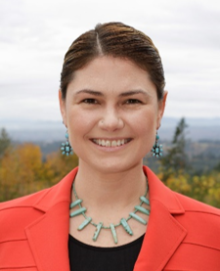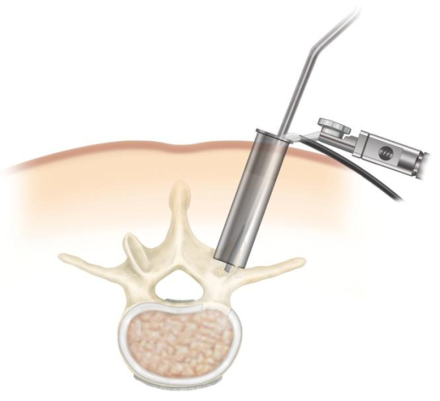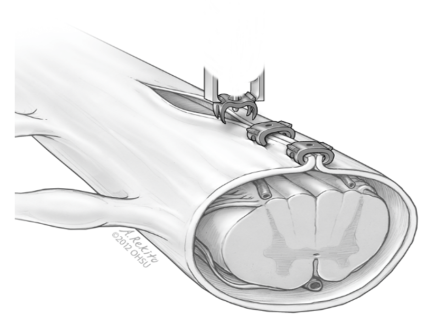
Rachel Dreilinger
Co-Founder and CEO
NeuraMedica Inc.
www.NeuraMedica.com
Principal Investigator
Make a difference by honoring your strength
Yá'át'ééh (hello), my name is Rachel Dreilinger and I am a member of the Diné (Navajo) Nation. I did not grow up on the Navajo Reservation or “the Rez,” but my culture has always been a part of my life. My grandmother Flora Sombrero Lind grew up on the Diné Nation near Kayenta, Arizona. My grandfather, Rulon Lind is bilagáana (white) and he was a beekeeper. My mother Neeta Lind is a Native activist and is involved in political outreach. Our clans are T ł 'ízí lání (Many Goats) and Kin ł ichii'nii (Red House). My father, Jeffrey Fillerup, is an attorney and bilagáana who serves on the board of the American Indian College Fund and provides pro-bono legal work for that organization.
My grandma Flora was taken from her family at a young age and sent to boarding school where she was forbidden from speaking her language, Diné Bizaad. Many Natives were involuntarily assimilated into western culture and forced to speak English, cut their long hair, and forbidden from practicing and passing down their cultural and spiritual teachings. Because of these policies, the Diné language was not passed on to my mother or myself, but we are still here, fighting to learn about our own culture and language.
As a white-passing Native girl growing up with a strong interest in science and math, I often felt different from other kids. I didn’t really like feeling that way and I wanted to fit in, but as I got older I started to identify with the idea of not being like other people, thinking differently, and choosing my own path in a way that others could not even fathom. It took a long time, but this turned out to be a really valuable lesson for me.
As I moved through high school, I had a strong interest in medicine and biology but no desire to become a doctor. When I learned about a degree called biomedical engineering, it sounded perfect to me and that’s what I ended up studying at the University of California, San Diego (UCSD). I really enjoyed the autonomy I had in college, but the level of work was so much harder than high school and I had no support network. It took me a few years to figure out that I needed to work with other students to get through the impossible homework sets, get help from professors at office hours, and create a network of collaborators to get through the grueling course load. This practice of building and relying on a support network is one that has benefited and enabled my career ever since.
After completing my BS at UCSD, I went directly into the workforce. One great benefit of studying engineering is that you don’t necessarily need a graduate degree to advance your career. After a stint in lab automation, I spent ten years as a consultant in medical device design. Working as a consultant was enriching in many ways. I was able to gain experience at many different companies while keeping my autonomy and freedom. From this perspective, I could see the entire medical device landscape, as well as how companies are run, what conflicts can arise, and how I might do things differently. These experiences put me on the path of entrepreneurship, but I still didn’t necessarily see myself as a future CEO—that is, until a mentor of mine, Michael Tippie, pushed me to consider the idea. He connected me with my current business partner, neurosurgeon Neil Roundy, MD, and advocated that we form a company around Dr. Roundy’s initial idea. With his support and encouragement, we did just that and I came on as CEO.
Today, I am co-founder and CEO of NeuraMedica Inc., a neurosurgery device company in Oregon City, Oregon. We are developing a novel bioabsorbable surgical clip and applier for rapid closure of the dura mater (the membrane that protects the brain and spinal cord) in open and minimally invasive spine surgery. This technology will help neurosurgeons and orthopedic spine surgeons quickly and more easily repair the dura. We founded our startup in 2014 and have raised $2.5 million to-date, and, together with our four employees, we hope to launch our product in 2021.
Our very first grant was from the Oregon Health & Science University (OHSU)/Oregon Clinical and Translational Research Institute (OCTRI) Biomedical Innovation Program (BIP), a program funded by the National Center for Advancing Translational Science (NCATS) at NIH. This provided the initial seed funding to develop early prototypes for our device before NeuraMedica even existed as a company. If not for this funding, my company, which is both women-owned and Native-owned, might not exist today.
Our largest funding source to date ($1.5 million) is the NINDS Small Business Innovation Research (SBIR) Phase II grant we were awarded in 2018. This grant has been pivotal in accelerating the development process and has been especially helpful in covering critical commercialization costs. This has allowed us to focus our energy and resources toward bringing a novel technology to market sooner, which will benefit patients, surgeons, hospitals, the medical device industry, and our local economy. Although we have also received investment and grant funding from the National Science Foundation (NSF) SBIR Phase I Program, the Oregon Nanoscience and Microtechnologies Institute (ONAMI), and Business Oregon and the Oregon Innovation Council (Oregon InC)—the NINDS SBIR Phase II award came at a critical moment when follow-on funding was uncertain. Obtaining funding for early-stage startups is extremely challenging and time-consuming and is one of the biggest reasons for delays in the commercialization process, so we are very grateful for this program.
I love working in the medtech field because solving health care problems for patients and clinicians is a very strong motivator for me. The work I do feels good because I believe it provides a direct positive impact on health outcomes for individuals and society. Still, the process of becoming an engineer and founding companies is arduous. I often tell people that running NeuraMedica for the last five years has been like running 60 marathons in a row; once you get through one challenging ordeal, another is already visible and approaching on the horizon. Also, entering the business world after working exclusively as an engineer can be intimidating—so it’s important to have experienced advisors. Without the encouragement and advice of my mentors, I would not be CEO of my own medical device company today.
As a white-passing Native growing up in western culture, I know that I experience tremendous white privilege and I have had opportunities that other Natives do not. I feel it is important for me to use my position of privilege to help other Natives in any way I can in order to give back to my community. This includes listening to elders and black and brown Natives for what is needed in the community and telling me how I can be useful (and not the other way around).
I do not experience discrimination based on skin color, but I have definitely experienced gender discrimination and sexual harassment in academic and work environments. It is extremely discouraging and infuriating to say the least—so I have developed some strategies over the years to cope. I am fortunate to be at a stage in my career where I can be very careful about who I work with, surround myself with supportive people, start my own companies where I define the business culture, and do everything I can to prevent the toxic environment that exists in other companies. If I can have any level of influence on creating more equity for women and Natives in engineering and the business world then I think these efforts are worthwhile.
I would love to see more Native representation in engineering, technology, as business owners and investors, and as part of the SBIR program. I think it’s important for Native people to participate in these endeavors on their own terms and bring their own values to the table rather than trying to fit into an existing system. As the owner of my own company, I can work to make NeuraMedica a welcoming and comfortable environment so that my employees are able to bring their whole selves and unique qualities to work. I have learned that seeing things in a unique way is an asset that can be the key to solving “unsolvable” problems and is critically important to forging new paths in science, in healthcare, and in society.
Ahéhee' (thank you) for reading my story! I love meeting other Native scientists, engineers, and entrepreneurs, please feel free to reach out to me at rachel@NeuraMedica.com or add me on LinkedIn!
Current Work

NeuraMedica is developing an innovative dural clip and applier system that delivers small, bioabsorbable, non-penetrating clips for durotomy repair (the dura mater is the membrane that covers and protects the brain and spinal cord; a durotomy is an opening in the dura).
The current approach to closure of dural openings is time-consuming and labor intensive as it involves the use of very fine suture, often working through narrow corridors with limited visibility and access. Traumatic and surgical openings in the dura can result in cerebrospinal fluid leakage which, if not repaired, can cause wound breakdown, spinal headaches, infection, meningitis, and other potentially fatal complications.

The NeuraMedica dural clip is radiolucent (invisible to x-ray), MRI-compatible, and made entirely of a bioabsorbable polymer so it does not obstruct or create artifacts in post-op imaging. The clip will also dissolve in the body over time unlike permanent metallic clips and polypropylene suture. This device will enable rapid closure of complex dural openings, increasing the rate of repair, reducing surgeon frustration, minimizing patient risk and surgery time, and maximizing economic return in numerous clinical settings while reducing overall costs to the healthcare system.
